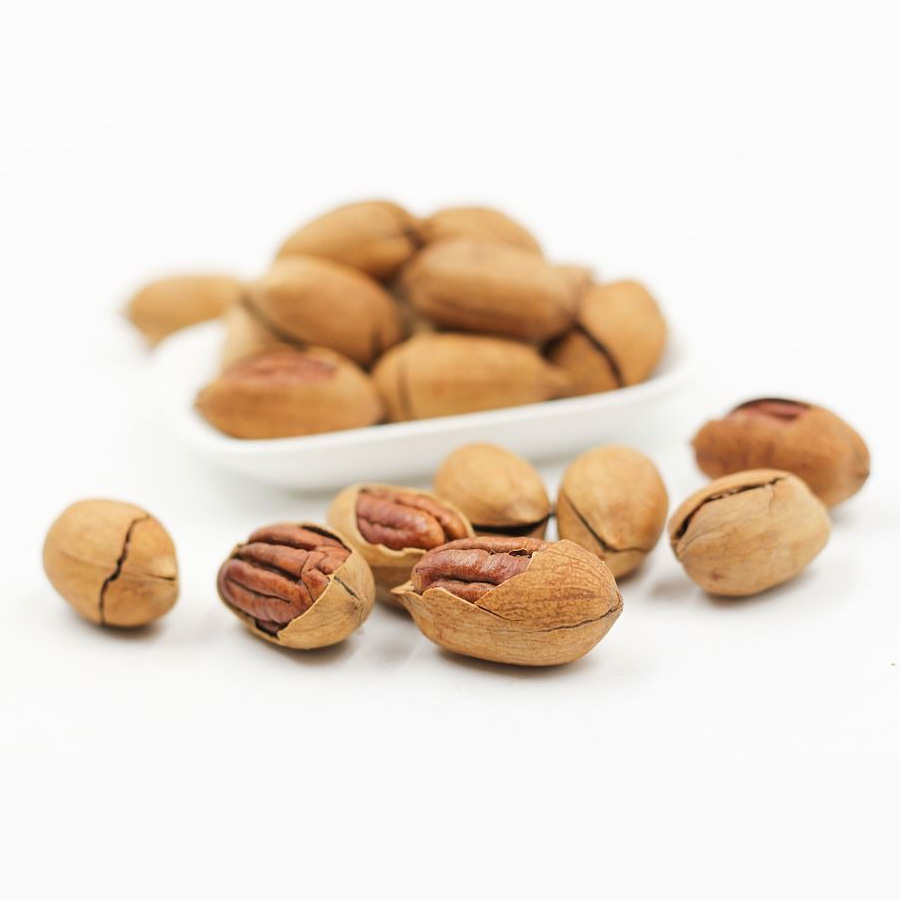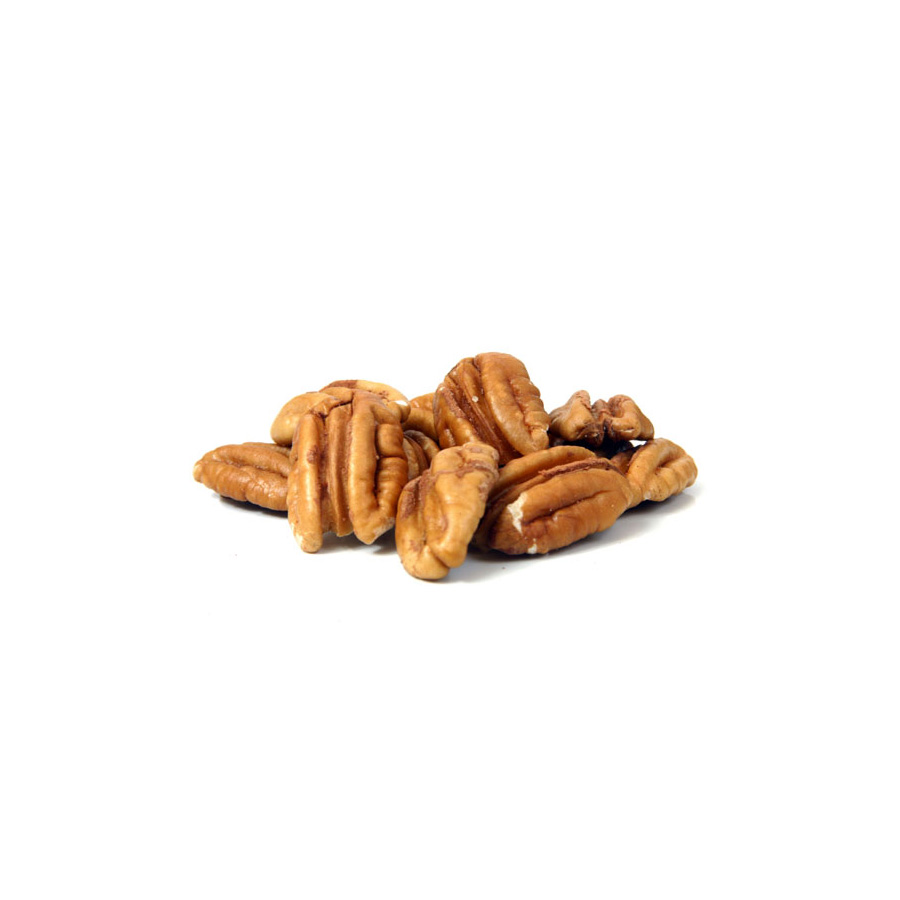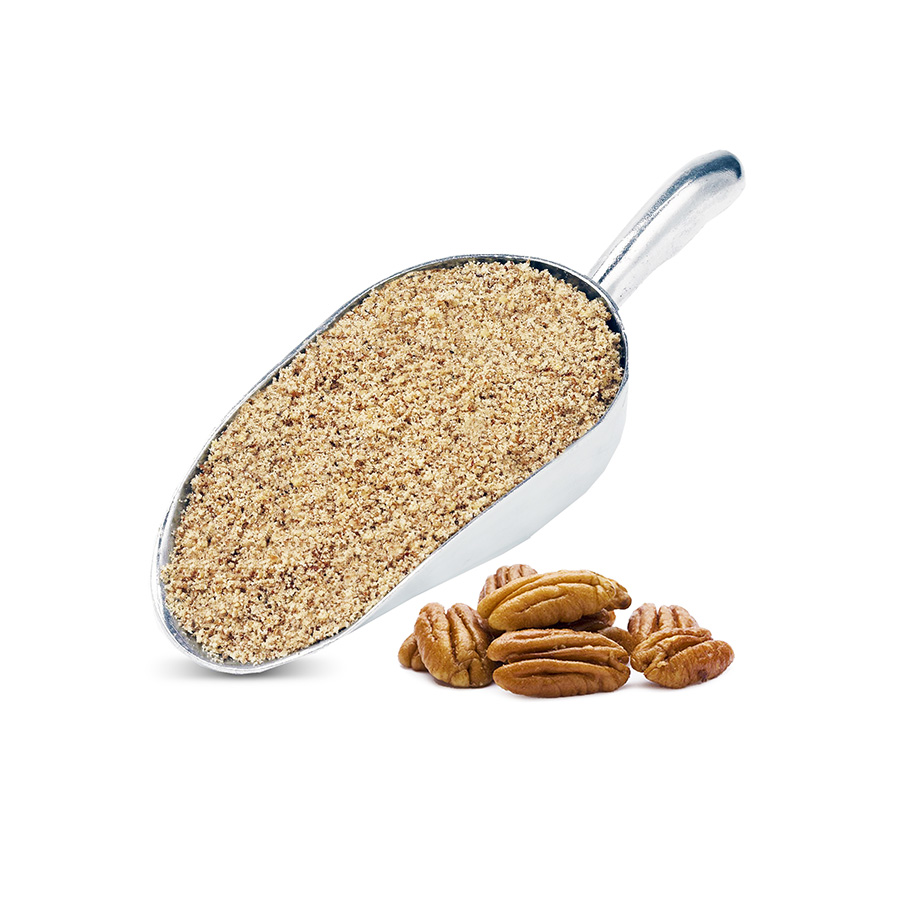“Pecan” is from an Algonquian word variously referring to pecans, walnuts and hickory nuts, or more broadly to any nut requiring a stone to crack. A pecan, like the fruit of all other members of the hickory genus, is not truly a nut, but is technically a drupe, a fruit with a single stone or pit, surrounded by a husk.
The seeds of the pecan are edible, with a rich, buttery flavor. They can be eaten fresh or used in cooking, particularly in sweet desserts. One of the most common desserts with the pecan as a central ingredient is the pecan pie, a traditional Southern U.S. dish. Pecans are also a major ingredient in praline candy.
In 100 g, pecans provide 691 Calories and over 100% of the Daily Value (DV) for total fat. Pecans are a rich source of dietary fiber (38% DV), manganese (214% DV), magnesium (34% DV), phosphorus (40% DV), zinc (48% DV) and thiamin (57% DV). Pecans are also a good source (10-19% DV) of protein, iron, and B vitamins. Their fat content consists mainly of monounsaturated fatty acids, mainly oleic acid (57% of total fat), and the polyunsaturated fatty acid linoleic acid (30% of total fat).










